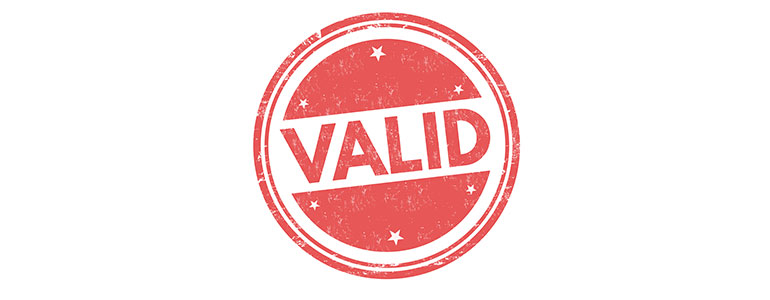Investment Proof Verification Guide For Employers
Investment proof is generally a submission form where employees declare an investment they have made in the previous financial year. These investments help employees get a tax saving under the income tax act section 80D or 80C.
As per law, employers need to deduct TDS after calculating the income tax and every month it needs to be remitted. When the financial year begins, employers have to collect declaration from their employees regarding their savings, house rents and investments to be eligible for exemption under salaries simply known as Income Tax Declaration.
While doing the calculation of the income tax for the employee, the two main components factored in are declared exemptions and deductions. The tax obtained after the final calculation is divided into equal monthly installments, which are then eventually deducted from the every month salary of the employee.
When the last quarter of the financial year begins, employees must keep their documentary proof ready for deductions and exemptions which they had declared at the start of the year. The tax deduction made in March is done on the basis of these proofs alone and not based on declarations. The employer is bound to dismiss claims that are not backed with any proper proof.
It is recommended for companies having more than 50 employees to complete the collection of investment proof process by January-end. This will give the HR department enough time to compute the final tax for the whole year and get the taxes remitted in March.
The POI collection process should be carried out with a proper plan and execution. A perfect verification at the initial stage can avoid several errors and lay a smooth path. The HR department must first decide on the start and end date for the POI window. There are seven most popular POIs which employer will have to check and verify thoroughly.

The seven important POIs are:
1. HRA (House Rent Allowance) - HRA is part of salary structure which can be claimed by employees as deduction. Employer here will have to collect rent agreement and rent receipts. If the rent paid is more than 1 lakh rupees per year, then it is mandatory to get the PAN card of the owner.
2. Housing Loan EMIs - Here employer should collect certificate from the employee’s bank which had sanctioned the loan. The certificate should mention the total principal amount and the interest paid. Principal amount has an overall cap of Rs 1.5 lakhs per annum which comes under section 80C and interest on loan comes under section 24. An exemption of up to Rs 2 lakhs per year can be claimed on the interest paid for the year.
3. Children Education Fees - Employees paying fees for the education of their children can claim deduction under section 80C. The upper-limit for exemption is Rs 1.5 lakhs per parent. Here employer will have to collect school or college or any institution fee receipts from the employee.
4. Life Insurance Premium - Here receipts for the premium paid should be collected by employer. Here employee can claim exemption even for their spouse or children.
5. Mutual Funds - This falls under ELSS scheme and here the tax can be exempted under section 80C. Here employee has to present Investment Declaration Statement to employer as POI document to get exemption.
6. 80D Medical Insurance - Employee can claim deduction under section 80D for medical expenses and medical insurance of senior citizen dependent parents. The exemptions are different for different age groups. Individual with family under the age of 60, but parents above the age of 60 can claim deduction of Rs 75,000, while individual with parents below the age of 60 years can claim deduction of Rs 50,000.
7. Public Provident Fund (PPF) - PPF account holders are entitled to tax-free returns for up to Rs 1.5 Lakhs per year under section 80C. Here PPF Account Statement or Passbook Scan has to be provided to the employer.

The HR Department should simply follow 7 steps to process Proof Investment
Planning: It is necessary to chalk out the whole process before collecting and verifying Proof of Investment. This should then be followed by deciding on the number of days the window should be kept open for employees to submit the POI. Accordingly, the deadline date to submit POI should be communicated to employees.
Collection of Proofs: The proof should be collected in the set time line in physical form or in the form of soft copy via email.
Resolve Queries: Make sure that employees are aware of the POI submission process and all their queries are cleared. The finance department should be available for help on call or mail.
Verify Submitted POI: Here the declared investment of employees are matched with the actual proof. After verifying, the employer can either reject or accept POI. When proofs do not match with the investment declaration made by the employee at the start of the financial year or if any of the document s missing, the POI can be rejected.
Re-Collect POI: If the proof submitted by employee is invalid or incomplete or do not match with the shared investment declaration, then the POI will have to be recollected.
Re-Verify POI: Before sending up the POI documents further, it should be re-verified to assure that proofs are accurate.
Payroll Computation & Follow-Ups: After re-collecting and re-verifying POI documents, the Income Tax for the employee should be re-calculated. This tax should be deducted from the in-hand salary of employees based on the income tax calculations. The TDS for employees are adjusted accordingly. Apart from the computation part, there are tasks for follow after collecting the POIs which include filing the proofs for future reference.
Hoshi by Neural IT is a cloud-based software helping simplify daily HR tasks. Digitise your HR function & let Hoshi empower HRs to easily onboard new hires, track employee progress, and analyse data to support employee development and organisation.
Share on:

